|
For over forty years the world's international relations were defined by the ideological conflict between the United States and the Soviet Union. Most nations were pushed into choosing between Capitalist and Communist economic theories creating a bi-polar world in which the two superpowers held sway over the destiny of virtually the entire planet. Conflicts that had raged for centuries were redefined in terms of the worldwide conflict as the United States and the Soviet Union provided support to one side or the other. This low-level war in which the proxies of the major powers fought each other while the larger nations remained in the background quickly came to be called the Cold War.
In an earlier age two nations as bitterly opposed to each other as the United States and the Soviet Union would have inevitably gone to war. The new element that prevented a full-blown conflict was the development at the end of World War II of nuclear weapons and ballistic missiles. Once both sides had the ability to exterminate not only each other, but the entire human race, a direct conflict between the two became virtually unthinkable. Each side soon sought other means of confronting the other. This resulted in the innumerable civil wars that wracked Africa, Asia, and Latin America through the middle part of the Twentieth Century. Supported by floods of weapons from both sides, old grievances flared up into small regional wars that allowed the superpowers to try to extend their influence without fighting each other directly. The superpowers came close to open confrontation only once, during the Cuban Missile Crisis, and both sides quickly stepped back from the brink of nuclear war.
The Titan II is the largest ballistic missile developed by the United States. It can carry a warhead of over nine megatons, or the equivalent of nine million tons of TNT and deliver it anywhere within 5,500 miles in less than half an hour. The amount of TNT to equal the explosive power of the Titan II warhead would require a train of 90,000 boxcars. The train would be 1,534 miles long, not counting the engines or caboose and would stretch from Tucson to Lexington, Kentucky.
The Titan II and the other missiles that sat waiting in their silos represented humanity's ability to destroy itself, but the Titan also launched the Gemini Program's astronauts into orbit, sent the Viking probes to Mars, and launched Voyager into the outer solar system. With the end of their life as weapon systems reused Titans became the basis for rockets that have launched dozens of satellites into orbit. The existence of the Titan as a weapon helped to prevent a massively destructive war between the United States and the Soviet Union. It has also served to advance human knowledge and begin the exploration of space.
|
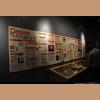


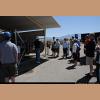
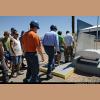
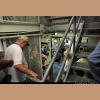
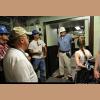
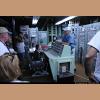


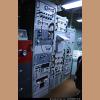



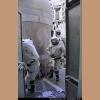
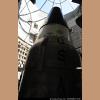

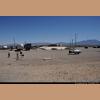
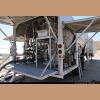

|
